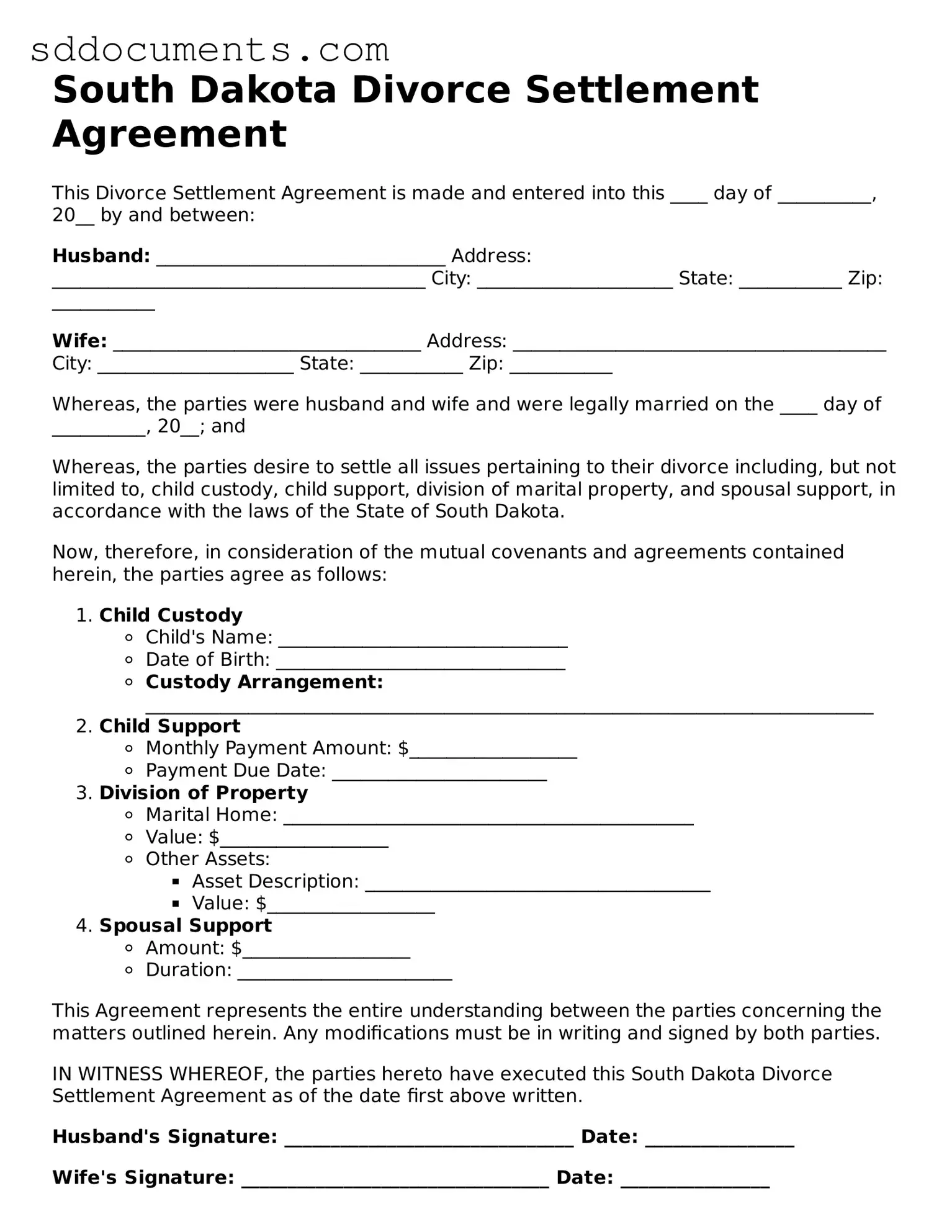Free Divorce Settlement Agreement Template for South Dakota
The South Dakota Divorce Settlement Agreement form is a crucial legal document that outlines the terms agreed upon by both parties during a divorce. This agreement typically addresses issues such as property division, child custody, and support obligations, ensuring that both individuals have a clear understanding of their rights and responsibilities. To simplify the process, you can fill out the form by clicking the button below.
Customize Document Online
